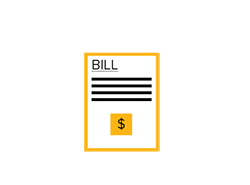The Value Stack
The New York State Public Service Commission (PSC) established the Value of Distributed Energy Resources (VDER) or the Value Stack, a new mechanism to compensate energy created by distributed energy resources (DERs), like solar.
The Value Stack compensates projects based on when and where they provide electricity to the grid and compensation is in the form of bill credits. This is determined by a DER’s:
- Energy Value (LBMP)
- Capacity Value (ICAP)
- Environmental Value (E)
- Demand Reduction Value (DRV)
- Locational System Relief Value (LSRV)
Additionally, certain Community Distributed Generation (CDG) projects may have a Market Transition Credit (MTC) or Community Credit (CC). These elements recognize the benefits that DERs provide to the grid and society, including avoided carbon emissions, cost savings to customers and utilities, and other savings from avoiding expensive capital investments.Solar Value Stack Calculator To estimate a solar project's revenue under the Value Stack, use the Solar Value Stack Calculator.
Sign up to receive the latest updates on NY-Sun and the Value Stack via email. If you have additional questions about the Value Stack, email us at [email protected].
How the Value Stack Works

A developer develops and interconnects a DER.

The electricity produced by that system is injected into the grid.

The utility determines the value of the energy produced using the Value Stack methodology.

The utility allocates the monetary value of the energy produced to the offtaker's bill. For a CDG project, the developer directs the utility how to split the credits between many offtakers.

Offtakers pay a subscription fee to the DER developer. Steps 2-5 repeat each month.*
*Currently, the offtaker (a customer receiving bill credits from a DER) will receive a separate bill from the developer. Under consolidated billing, the payment will be made by the utility to the developer “behind the scenes” and offtakers will only see their single electric bill.
Incentives for Community Distributed Generation (CDG) Projects
In addition to the base Value Stack compensation, eligible Community Distributed Generation (CDG) projects, like community solar, may receive a Community Credit (CC). The CC provides a supplemental $/kilowatt-hour (kWh) that is locked in for 25 years (the rate varies based on location and availability). The CC is the successor to the Market Transition Credit (MTC) and is similar in structure.
To continue the robust development of CDG projects, the Community Adder is available in areas that have fully exhausted their CC tranches. For more information, including current rates and availability, see the Community Adder dashboard. Solar projects compensated under the Value Stack may also be eligible for incentives through NYSERDA’s NY-Sun program.
Use the table below to determine the availability of the CC and the MTC in each utility.
Allocated Capacity of CC and MTC per Tranche (MW AC)
| Tranche | ConEd | NYSEG | Orange & Rockland | Central Hudson | National Grid | RG&E |
|---|---|---|---|---|---|---|
| Community Credit - Tranche 1 | 350 of 350 MW - Closed | 110 of 125 MW - Closed | N/A | N/A | 514 of 525 MW - Closed | 81 of 80 MW - Closed |
| Community Credit - Tranche 2 | N/A | 36 of 36 MW - Closed | N/A | N/A | 40 of 40 MW - Closed | 7 of 7 MW - Closed |
| MTC - Tranche 0/1 | 8 of 136 MW - Closed | 61 of 62 MW - Closed | 19 of 23 MW - Closed | 25 of 39 MW - Closed | 66 of 140 MW - Closed | 25 of 28 MW - Closed |
| MTC - Tranche 2 | 0 of 206 MW - Closed | 59 of 84 MW - Closed | 8 of 12 MW - Closed | 18 of 19 MW - Closed | 0 of 160 MW - Closed | 37 of 42 MW - Closed |
| MTC - Tranche 3 | 0 of 205 MW - Closed | 52 of 77 MW - Closed | 26 of 12 MW - Closed | 30 of 19 MW - Closed | 0 of 177 MW - Closed | 0 of 41 MW - Closed |
| MTC - Tranche 4 | N/A | 0 of 80 MW - Closed | 14 of 15 MW - Closed | 21 of 20 MW - Closed | N/A | N/A |
Current as of October 6, 2021. Closed tranches are indicated in red.
Value Stack on Long Island
The Long Island Power Authority (LIPA) approved a tariff update effective August 1, 2019, bringing its Value of Distributed Energy Resources (VDER) compensation methodology closely into alignment with the Public Service Commission (PSC) Orders. LIPA’s tariff document![]() contains the relevant details. Please visit PSEG’s VDER website
contains the relevant details. Please visit PSEG’s VDER website![]() for more details and Long Island specific resources. Additionally, the Solar Value Stack Calculator has been revised to include projects in PSEG-Long Island’s service territory.
for more details and Long Island specific resources. Additionally, the Solar Value Stack Calculator has been revised to include projects in PSEG-Long Island’s service territory.
Long Island’s Value Stack tariff largely resembles the rest of the State’s with a few differences:
- For Community Distributed Generation (CDG) projects that qualify before 1/1/2020, mass market (residential and non-demand commercial) will receive volumetric crediting rather than monetary crediting through the Value Stack. For CDG projects that qualify after 1/1/2020, the projects will receive monetary Value Stack compensation, including a Community Credit (CC), regardless of offtaker makeup. The current CC value has been increased from $0.02/kilowatt-hour (kWh) to $0.05/kWh.
- The Demand Reduction Value (DRV) element of the Value Stack is calculated based on system injections to the grid between 2-7 p.m. on non-holiday weekdays from June 1 to August 31
- The Capacity Value (ICAP) is calculated based on the New York Independent System Operator (NYISO) spot, not monthly, capacity auction price
Value Stack Orders and Updates
| Update Date | Name | Update by | Description |
|---|---|---|---|
| May 14, 2020 | Order Extending and Expanding Distributed Solar Incentives [PDF] | Public Service Commission | Expanded the Community Adder to NYSEG, National Grid, and RG&E. |
| March 19, 2020 | Order Regarding Community Credit and Community Adder Allocations [PDF] | Public Service Commission | Opened the Community Credit (CC) Tranche 2 in National Grid, NYSEG, and RG&E starting May 1, 2020. |
| August 1, 2019 | Updated LIPA Electric Tariff |
Long Island Power Authority (LIPA) | Approved a tariff update bringing LIPA’s Value of Distributed Energy Resources (VDER) compensation methodology closely into alignment with the rest of the State’s. |
| April 18, 2019 | Order Regarding Value Stack Compensation [PDF] | Public Service Commission | Updated Value Stack Order providing many significant improvements, including eligibility for Phase One Net Metering, Community Distributed Generation (CDG) incentives and adder changes, etc. |
| September 12, 2018 | Order on Value Stack Eligibility Expansion and Other Matters [PDF] | Public Service Commission | Expanded the Value Stack compensation to additional Distributed Energy Resources (DERs) and authorized interzonal crediting for remote crediting and CDG projects being compensated by the Value Stack. |
| September 14, 2017 | Order on Phase One Value of Distributed Energy Resources Implementation Proposals, Cost Mitigation Issues, and Related Matters [PDF] | Public Service Commission | Expanded Phase One Value Stack mechanisms and methodologies, also known as the “VDER Implementation Order.” |
| March 9, 2017 | Order on Net Energy Metering Transition, Phase One of Distributed Energy Resources, and Related Matters [PDF] | Public Service Commission | Established the principles and methodology of the Value Stack. |




